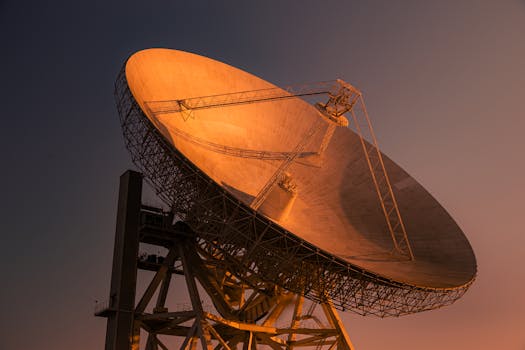
MEO Satellites: Unlocking Global Connectivity with Medium Earth Orbit Technology
MEO satellites, or Medium Earth Orbit satellites, are a type of satellite that operates in an orbit between 2,000 and 36,000 kilometers above the Earth’s surface. This orbit is higher than Low Earth Orbit (LEO) satellites but lower than Geostationary Orbit (GEO) satellites. MEO satellites are designed to provide global coverage and are used for a variety of applications, including navigation, communication, and Earth observation.
MEO satellites have several advantages over other types of satellites. One of the main benefits is their ability to provide global coverage with a smaller number of satellites. Because they operate at a higher altitude than LEO satellites, MEO satellites can cover a larger area with a single satellite. This makes them a more cost-effective option for providing global coverage. Additionally, MEO satellites have a lower latency than GEO satellites, which makes them better suited for real-time applications such as voice and video communication.
How MEO Satellites Work
MEO satellites work by transmitting and receiving signals to and from Earth-based stations. They are equipped with transponders, which are devices that receive signals, amplify them, and then retransmit them back to Earth. MEO satellites also have antennas that are used to receive and transmit signals. The satellites are powered by solar panels, which provide the energy needed to operate the satellite’s systems.
MEO satellites are launched into space using rockets, and once they reach their desired orbit, they are positioned and stabilized using a combination of propulsion systems and attitude control systems. The satellites are then connected to a network of ground stations, which are used to control and communicate with the satellites.
Applications of MEO Satellites
MEO satellites have a wide range of applications, including navigation, communication, and Earth observation. One of the most well-known applications of MEO satellites is the Global Positioning System (GPS), which is a network of satellites that provide location information to GPS receivers on the ground. MEO satellites are also used for communication, providing internet connectivity to remote and underserved areas. They are also used for Earth observation, providing data on weather patterns, ocean currents, and other environmental factors.
In addition to these applications, MEO satellites are also being used for a variety of other purposes, including search and rescue, disaster response, and environmental monitoring. They are also being used to provide connectivity to the Internet of Things (IoT) devices, which are devices that are connected to the internet and can collect and transmit data.
Future of MEO Satellites
The future of MEO satellites is exciting and rapidly evolving. With the increasing demand for global connectivity and the growing need for real-time data, MEO satellites are becoming a crucial component of modern telecommunications infrastructure. As technology continues to advance, we can expect to see even more innovative applications of MEO satellites, including the use of constellations of small satellites to provide global coverage and the development of new technologies such as phased array antennas and advanced propulsion systems.




